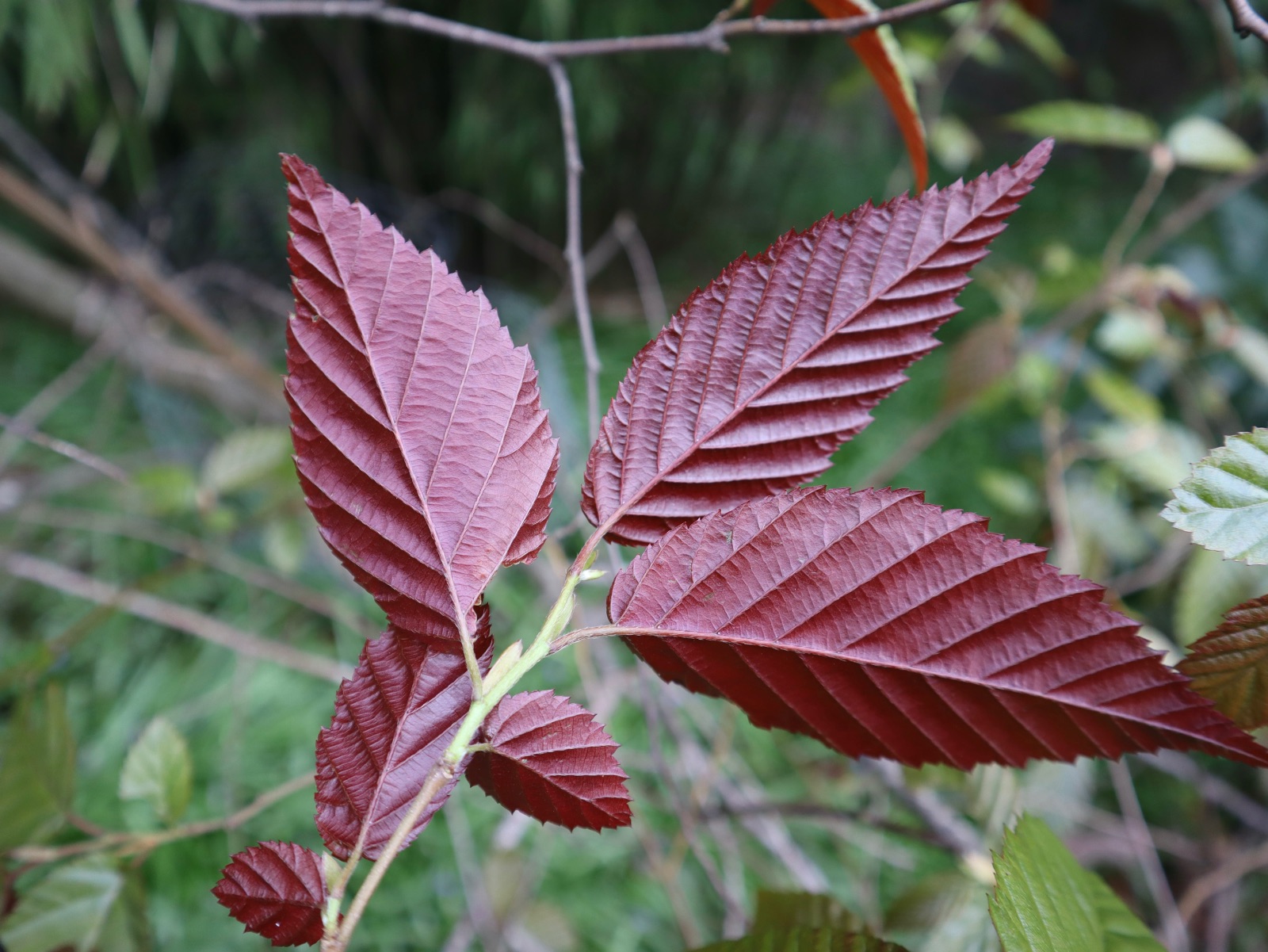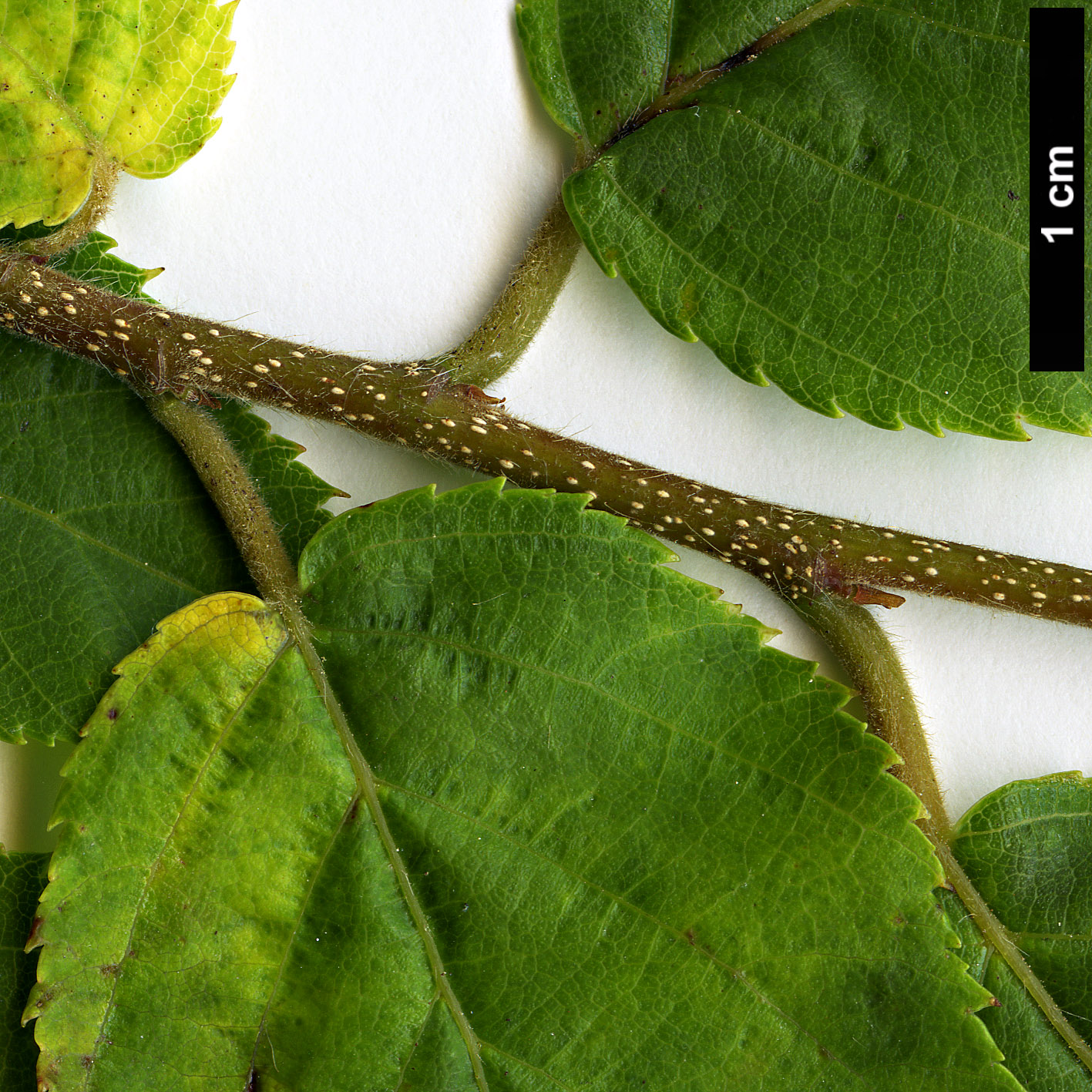Carpinus londoniana
Sponsor
Kindly sponsored by
Lord and Lady Aldington
Credits
Owen Johnson (2022)
Recommended citation
Johnson, O. (2022), 'Carpinus londoniana' from the website Trees and Shrubs Online (treesandshrubsonline.
Genus
Synonyms
- Carpinus poilanei A. Camus
Other taxa in genus
- Carpinus betulus
- Carpinus caroliniana
- Carpinus cordata
- Carpinus faginea
- Carpinus fangiana
- Carpinus fargesiana
- Carpinus hebestroma
- Carpinus henryana
- Carpinus japonica
- Carpinus kawakamii
- Carpinus laxiflora
- Carpinus mollicoma
- Carpinus monbeigiana
- Carpinus omeiensis
- Carpinus orientalis
- Carpinus polyneura
- Carpinus pubescens
- Carpinus rankanensis
- Carpinus × schuschaensis
- Carpinus shensiensis
- Carpinus tropicalis
- Carpinus tschonoskii
- Carpinus turczaninovii
- Carpinus viminea
Tree to 13 m. Bark grey, smooth. Twigs dark grey-brown, densely pubescent into their second year. Leaves variably oblong to lanceolate, 6–12 × 2–4 cm; becoming glabrous except for tufts under the vein-axils; lateral veins rather distant and not markedly parallel, in 11–13 pairs; margin irregularly double-serrate, the teeth with mucronate tips; petiole short (4–7 mm) but thick, remaining densely pubescent. Female catkins short, glabrous. Fruit-bracts to 3 cm long, asymmetrically 3-lobed, the central lobe oblong to lanceolate and entire on one side, and the side lobes both about the same size. (Li & Skvortsov 1999).
Distribution Myanmar Mountains in the south-east of the country China S Anhui, Fujian, N Guangdong, Guangxi, SE Guizhou, Hainan, Hunan, Jiangxi, S Sichuan, S Yunnan, Zhejiang Laos Thailand Mountains in the north Vietnam Mountains in the north
Habitat Forests of moist mountain slopes, 300–1800 m asl.
USDA Hardiness Zone 9
RHS Hardiness Rating H4
Conservation status Least concern (LC)
Carpinus londoniana was named by H.J.P. Winkler in 1904, ‘in honour of my friend Solomon London, a patron and promotor of science and the arts’ (author’s translation of the original Latin). It is a distinct species in its combination of three-lobed fruit-bracts, the leaves’ relatively few and distant side-veins, the dark and persistently hairy twig, and the hairy petiole which is very short (4–7 mm) but almost as stout as the twig itself. The fruit-bracts resemble those of C. viminea, which sometimes creates confusion, but the latter species has notably long (15–30 mm) and slender leaf-stalks; it is not in fact closely related to C. londoniana, which seems nearest in evolutionary terms to C. polyneura, a less pubescent species with ‘D-shaped’ fruit-bracts (Dong et al. 2022).
In contrast to many Chinese hornbeams which have been described as separate species on the basis of tiny variations in leaf size and shape, the leaves of C. londoniana are remarkably variable and can be oblong, ovate or quite narrowly lanceolate (and hence ‘un-hornbeam-like’ to western eyes). The Flora of China (Li & Skvortsov 1999) separates three varieties largely on the basis of leaf-shape, in addition to var. londoniana itself which has rather lanceolate leaves to 12 cm long: var. latifolia P.C. Li has oblong leaves with ‘shoulders’ rather like those of the European C. betulus, and is restricted to subtropical forests around 600 m on the Ningbo Xian in China’s Zhejiang province; var. lanceolata (Hand.-Mazz.) P.C. Li has very slender leaves to 8 × 2.6 cm and is endemic to subtropical forests in China’s Hainan island; var. xiphobracteata P.C. Li differs from var. londoniana in the teeth of its leaves whose tips are not mucronate and the central lobe of the fruit-bract which is slenderer and long-pointed, and is restricted to subtropical forests around 700 m on the Yin Xian in Zhejiang. Var. londoniana has much the widest natural distribution, and all the plants in cultivation can be assumed to belong to this variety.
As a species with a largely subtropical distribution, Carpinus londoniana is only marginally hardy in the UK. It was introduced in the 1990s by the independent plant-hunter and conservationist Tom Hudson, but a plant at Wakehurst Place in West Sussex was cut to the ground each winter (Grimshaw & Bayton 2009), and a promising young tree at Hudson’s own garden, Tregrehan in Cornwall (Hudson 2004), failed to survive the chilly winters of 2008–10. The same introduction is however the likely origin for thriving trees in the very mild climate of New Zealand’s North Island (T. Hudson pers. comm.) with very slender, elegant leaves (Ziarnek 2017). A more recent introduction from north Vietnam, which from foliage characteristics also seems to be C. londoniana, is somewhat hardier and has survived for several years in woodland shelter at Maurice Foster’s White House Farm Arboretum in Kent (Tree Register 2022). This represents a variation seen in juvenile specimens of several Asiatic hornbeams in which the red or purplish anthocyanins, which protect the young foliage, persist underneath the leaf throughout the season. At Tregrehan this collection is fully evergreen, and hence colourful year-round.
Although a highly desirable garden plant, Carpinus londoniana is not yet available commercially and may not be grown in North America at all.











